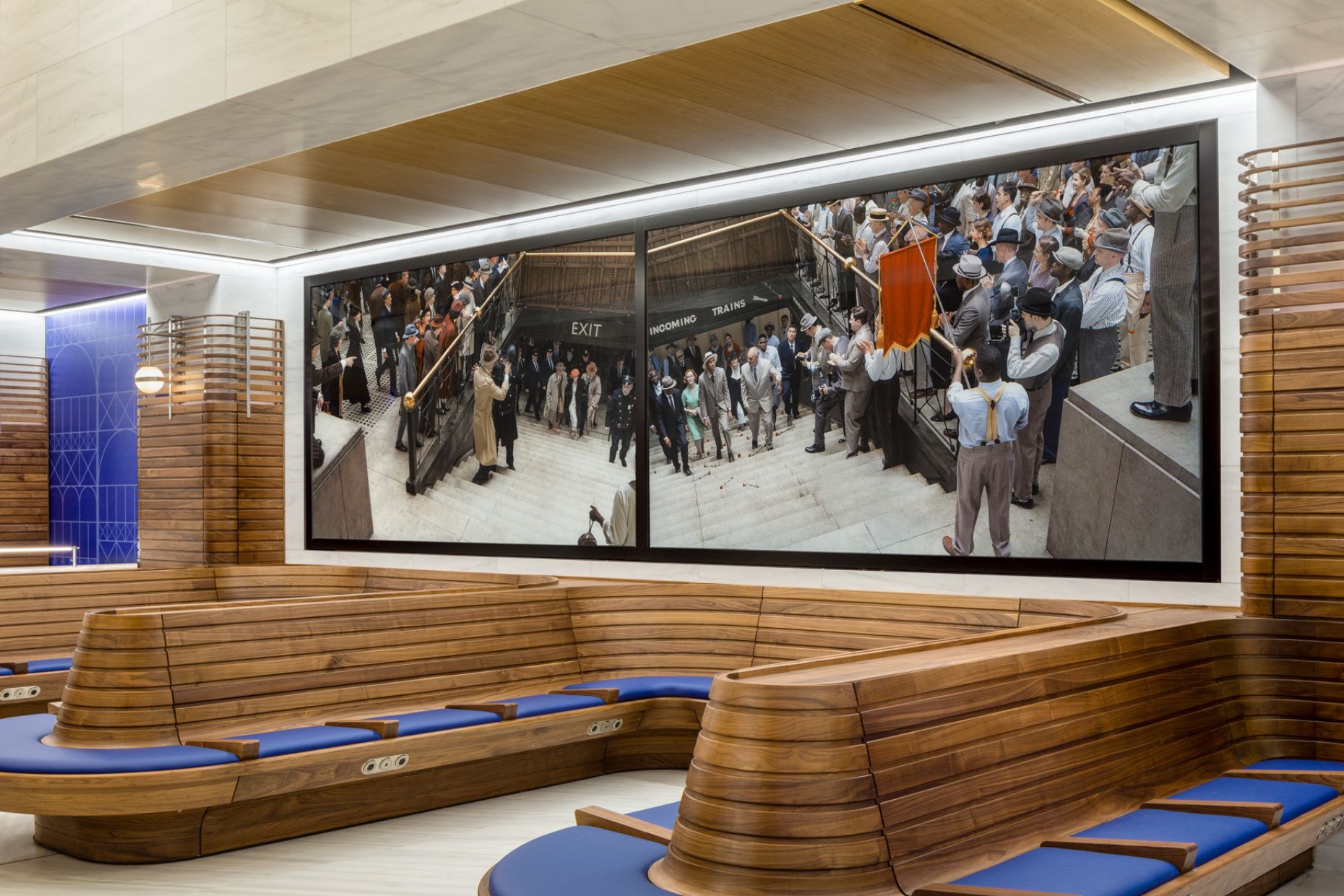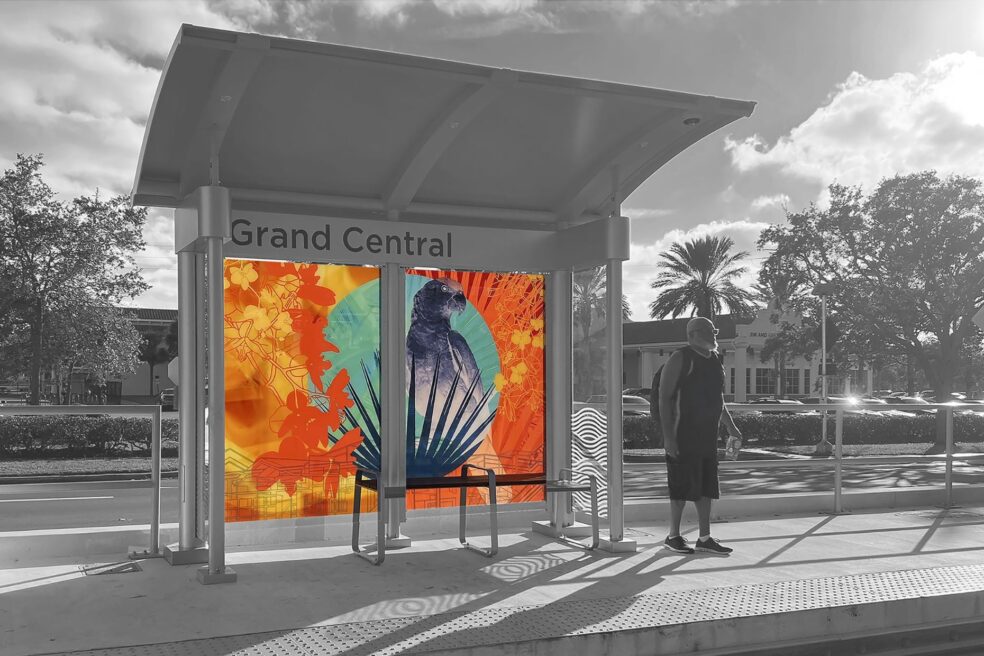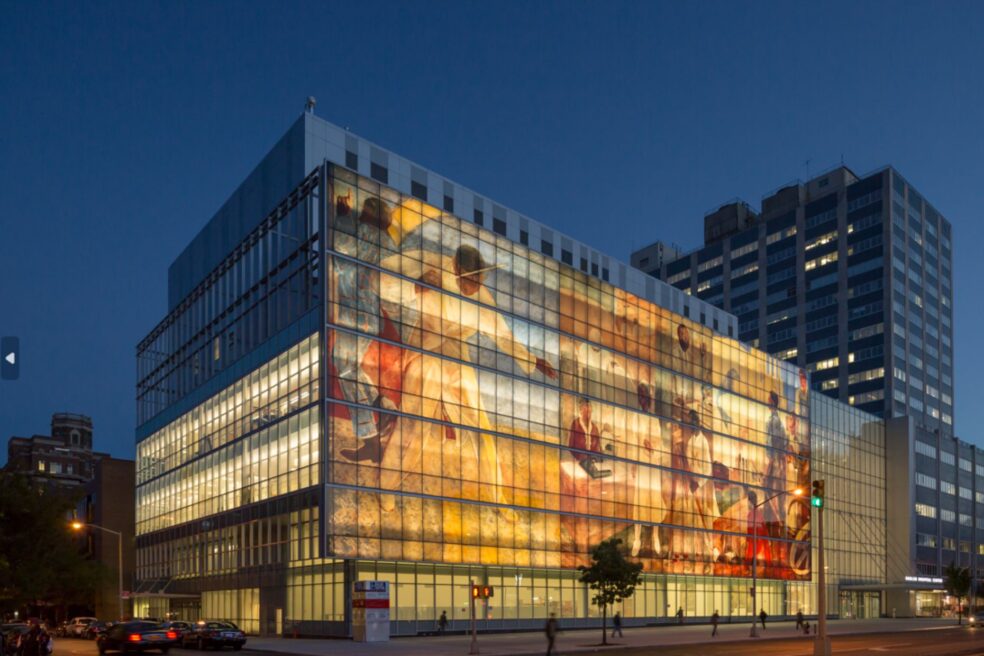February 19, 2024

Instilling a sense of civic pride, and infusing color and excitement into an otherwise ordinary space, public art plays a key role in beautifying public areas.
As the famous artist Pablo Picasso once said, “Art washes away from the soul the dust of everyday life”.
Meeting diversity, equity and inclusion goals in making public art free to all, interest in decorative glass technologies is growing.
Combining biophilic design and art with architectural glass and wall cladding, municipalities and institutions are seeking digital imaging on glass and fabrication technologies capable of bringing artists’ visions to larger-than-life public installations.
Celebrating Public Art
Because public art plays such an important role in celebrating, honoring and paying tribute to the communities they serve, a number of organizations actively promote these types of projects.
For example, the Public Art Fund, serving New York and beyond, was founded by a woman who believed that art shouldn’t be contained within the confines of museums and galleries, but rather should be a part of daily life.
As stated in one of the non-profits promotional videos, “Art gives us fuel for our fire to build, create and overcome.”
Another important organization is CODAworx, focused on connecting artists with industry collaborators like fabricators and glazing contractors.
As stated in CODAworx’s manifesto, “Great design + art can transform spaces and affect our happiness and well-being. Now, more than ever, we need artists provide us with inspiration, creativity, and imagination and to help us envision a better world.”
Bringing the Artists Story to Life
Public art can be a sculpture, mural or memorial, or present as digitally printed glass on wall cladding or transportation shelters, for example.
Case in point, in St. Petersburg, Florida, local artist Catherine Woods was commissioned by the Pinellas Suncoast Transit Authority to create a public art display to be installed across a 10-mile stretch served by the new line.
Woods travelled around the city taking hundreds of pictures. The resulting tropical colors and imagery have been described as a visual “love letter” to St Petersburg.
To bring her vision to life, Woods worked closely with General Glass International to print 32 glass panels (two panes for each bus shelter), measuring approximately 5-foot by 7-foot. The laminated glass panels are low iron tempered with a Sentry Glas® ionoplast. Alice® Direct to Glass Printing was applied on the #2 and #3 surfaces of each configuration. The glass configuration is designed to shield commuters from the elements and protects the integrity of the artwork while also meeting the Florida building code requirements for hurricane impact.
“I love working with glass as an art medium and appreciate how light interacts with colored glass,” said Woods.

Inspired by what Vaillancourt describes as the “cranes and rooftops of buildings and their mechanicals, which look like abstracted sculptural forms,” she created multiple abstract paintings incorporating colors of shingled houses in the neighborhood. The paintings then served as the source of the elevator glass motifs.
Working closely with GGI, it took time to precisely match the greens, blues, yellows, orange, gray and black in the digital prints, but the hard work paid off as GGI’s 720 DPI printer digitally jetted the colored ceramic frit ink onto the glass surface. The ceramic frit was then baked into the glass during the tempering process.
To make it easier for the installing glazing contractor to precisely layout and align each of the glass panels, GGI placed permanent identification on each panel. These identifications are electronically stored by GGI for ease of ordering replacement glass if ever needed.
The Collaborative Process of Public Art
To most accurately and effectively turn artists’ paintings into beautiful architectural glass, glass fabricators must pay close attention to the details and communicate well with the artist in order to work out the quality, color and resolution of the painting to be digitally printed.
It is helpful to know that artists are creative personalities and through their art, they tell a story. With this type of mindset, fabricators will increase their ability to preserve the accuracy and intention of the artists’ creation through the printing and fabrication process.
The Moynihan Train Hall (see header image) is one section of a much larger public art display created by world-renowned artist, Stan Douglas. Douglas sought out GGI because of the large format direct-to-glass printing capabilities required to bring this oversized display to fruition—and, of the resolution quality he desired. True to the company’s reputation, GGI reproduced Douglas’s artwork on glass with success after an extensive collaboration process during the peak of the Covid epidemic.

Design Considerations for Public Art Displays
There are multiple methods available for incorporating digital images into glass configurations. To select a digital printing solution best suited for a project, the details of the project must first be determined. See Harlem Hospital Center project example.
- Will the artwork be an interior or exterior display? Some printing technologies are designed for interior applications only and are not warranted for exterior applications. If the public art display is placed outdoors and exposed to the harmful rays of the sun and other weather conditions, the artwork should be produced with ceramic frit paint that is durable and resistant to fading.
- Laminated glass interlayers and direct-to-glass printed laminated glass is not equal. Laminated glass interlayers are produced by applying the digital image to a film that is then laminated between two or more glass panes. Make sure to review the warranty against fading. Direct-to-glass printing using a ceramic frit ink results in the artwork being applied to the glass surface which is then tempered to fuse the ink into the glass for added strength and durability. The artwork becomes an integral part of the glass. The glass is then laminated with a SentryGlas® ionoplast interlayer to further protect the artwork applied to the glass.
- Does the application require safety glazing and impact ratings? Some solutions are not compatible with safety glazing while others can support the glass to be laminated with a .030 PVB interlayer and/or a .060 or .090 impact resistant interlayer to meet specific weather or security requirements.
- Will the glass edge be protected in a framing system of some sort, or will the edges be exposed? For example, a traditional PVB (polyvinyl butyral) interlayer is not warranted for use with exposed edges.
- What is the level of opacity required? Most printing technologies only support digital imaging that is fully opaque or translucent, whereas Alice® Direct to Glass Printing can deliver architectural alas designs that are opaque, translucent, AND fully transparent—all within one glass panel. View the “Andante” Tampa Riverwalk project as an example.
At GGI, we are passionate about the narratives woven into each piece of artwork. Explore our project gallery to discover a multitude of public art installations and the captivating stories that bring them to life. To learn more about how Alice® Direct to Glass Printing effectively manipulates art, color, light and opacity on glass to animate public spaces, click here.